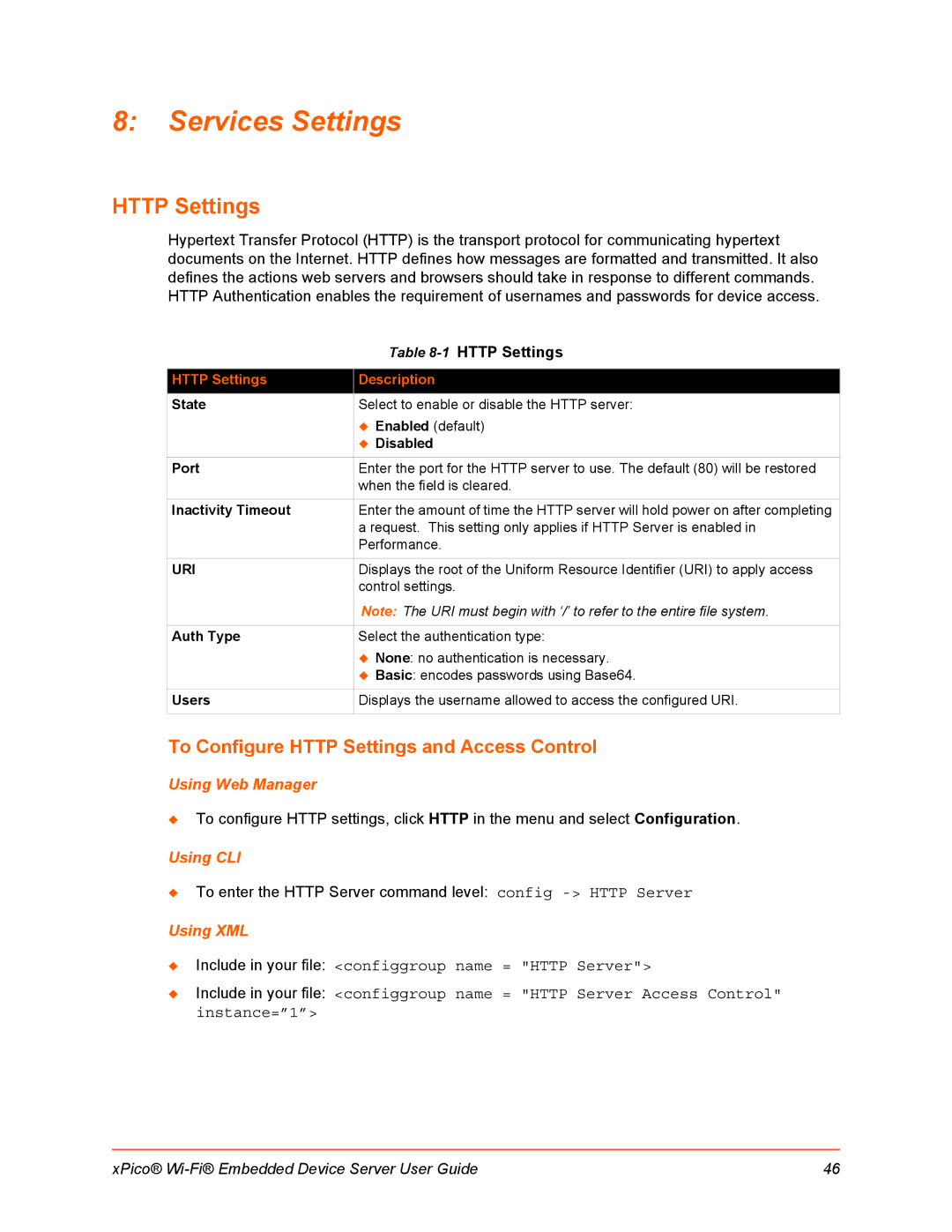8:Services Settings
HTTP Settings
Hypertext Transfer Protocol (HTTP) is the transport protocol for communicating hypertext documents on the Internet. HTTP defines how messages are formatted and transmitted. It also defines the actions web servers and browsers should take in response to different commands. HTTP Authentication enables the requirement of usernames and passwords for device access.
| Table |
|
|
HTTP Settings | Description |
State | Select to enable or disable the HTTP server: |
| Enabled (default) |
| Disabled |
|
|
Port | Enter the port for the HTTP server to use. The default (80) will be restored |
| when the field is cleared. |
|
|
Inactivity Timeout | Enter the amount of time the HTTP server will hold power on after completing |
| a request. This setting only applies if HTTP Server is enabled in |
| Performance. |
|
|
URI | Displays the root of the Uniform Resource Identifier (URI) to apply access |
| control settings. |
| Note: The URI must begin with ‘/’ to refer to the entire file system. |
|
|
Auth Type | Select the authentication type: |
| None: no authentication is necessary. |
| Basic: encodes passwords using Base64. |
|
|
Users | Displays the username allowed to access the configured URI. |
|
|
To Configure HTTP Settings and Access Control
Using Web Manager
To configure HTTP settings, click HTTP in the menu and select Configuration.
Using CLI
To enter the HTTP Server command level: config
Using XML
Include in your file: <configgroup name = "HTTP Server">
Include in your file: <configgroup name = "HTTP Server Access Control" instance=”1”>
xPico® | 46 |
